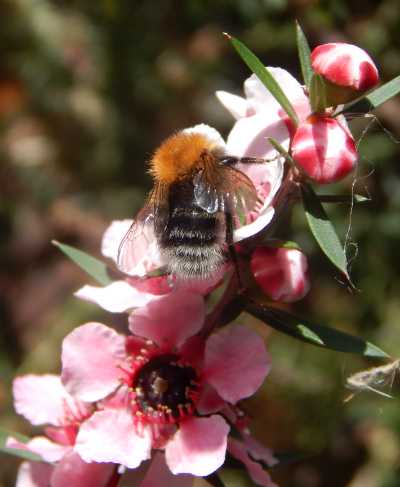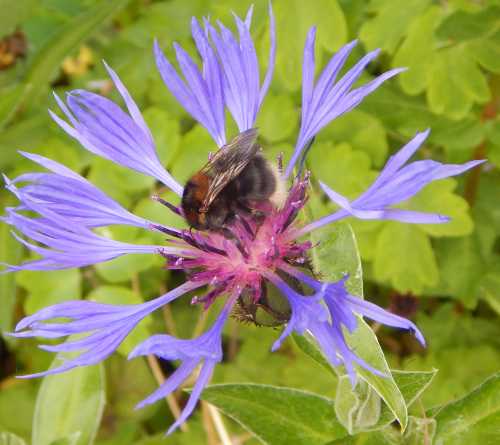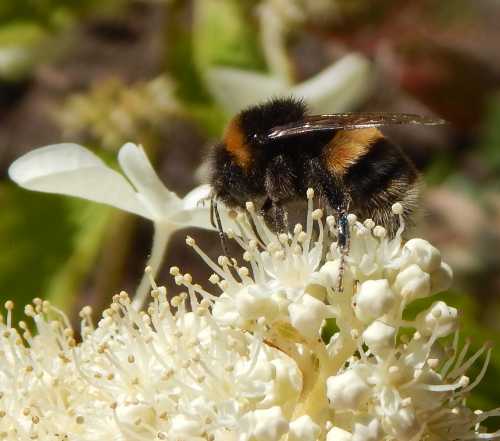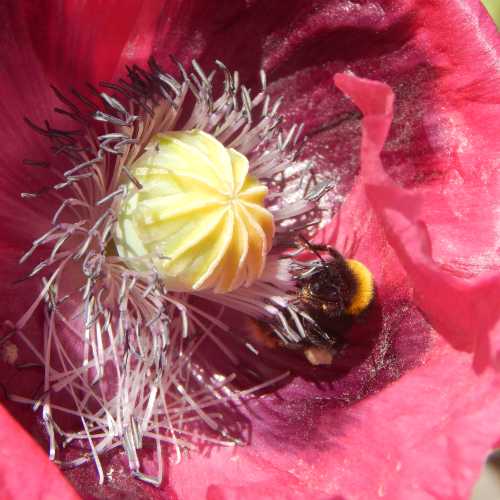Bees In The Shed
It's that time of year again, and I am getting questions concerning what to do about a nest of bumble bees in the garden shed.
Incase you have a similar dilemma, here is such a query I received recently, with my answer. I hope it helps!
Hi
I saw your page about bee nests in bird boxes attached to the outside of a garden shed, but I'm afraid I have a nest actually inside the shed itself. I am quite sure they are bumble bees, and I think they might even be tree bumble bees because they are brown with white tails.
There is a piece of broken perspex window which is where the bees are getting in and out. I didn't mind too much at first, but now there are rather a lot of them about. Some are outside the window, but some are inside the shed flying around. If we open the door to the shed, there are quite a few of them at any one time.
My wife is now concerned about going into the shed, and I myself am not keen either. We store some of our gardening tools in there, and would like to get at them as we are keen gardeners, and the weather is nice.
I don't want to destroy the nest as we like bees and enjoy seeing them on the flowers in our garden. Is there anything we can do? Will it be safe for us to go into the shed? How long will the colony last, do you think?
Thank you in advance for any advice you can give.
Derek, UK
 Tree bumble bee - Bombus hypnorum on manuka flower
Tree bumble bee - Bombus hypnorum on manuka flowerMy Answer:
The description and behaviour of these bumble bees convinces me that the bees are indeed tree bumble bees - Bombus hypnorum.
From the image above of a tree bumble bee foraging on the flowers of a manuka shrub in my garden, you can see this is indeed a bee with a brownish ginger thorax (upper body), and a white tail at the end of the black/dark abdomen (although dark forms of this species can be found - see below). The description of many bees flying around outside the entrance of the nest is typical behaviour of male tree bumble bees. They fly about in a kind of cloud as they await newly emerging queens with which they compete to mate.
 Bombus hypnorum dark form, newly emerged queen, on a cornflower. Instead of having a ginger thorax, it is black with some ginger close to the abdomen.
Bombus hypnorum dark form, newly emerged queen, on a cornflower. Instead of having a ginger thorax, it is black with some ginger close to the abdomen.How long will this bumble bee colony be active?
The very fact that the males are flying around the nest entrance means that this is a mature nest, since males are produced later in the colony cycle. This means that new queen bumble bees will emerge soon if they are not doing so already, and the colony will now begin to decline quite naturally until no more bees are seen. Although I cannot be sure exactly, this will probably happen very soon, perhaps even within a week depending on the stage in the colony's life cycle.
Is it safe to collect garden tools etc from the shed? Will the bees sting or abandon the nest if I try?
Do not worry about the cloud of males outside of the nest entrance, because they cannot sting. Worker females can, however. In this case, here are my 3 possible suggestions:
- In the very short term, think about what you need and what you can do without. You may feel it is easier to borrow a few tools from your neighbour, relative or a friend. This is a very temporary situation after all.
- If you urgently require tools from the shed, wear fully protective clothing (gloves, hair tucked into a hat, shoes - even a face covering if you have it) and visit the shed at night. Plan in advance what you need. You may hear some furious buzzing but they are less likely to bother you. If you happen to have a red torch lamp, this would be a better source of light to use if you need it. The bees won't abandon the nest at this stage.
- If you are aware that you have very severe allergic reactions to bee stings (such as the risk of anaphlyactic shock, such that you need an Epi-pen), or if you think it likely, or if you have apiphobia, it would be better to leave the nest alone, but you shouldn't have to wait very long.
There is really no need to have the nest removed and destroyed. Such action would be a waste of money for something that will be over in a week or two.
Create a
lawn for bees
If you found this page helpful or interesting, I'd really be grateful if you would share it with others - if not this page, perhaps another, such as Gardening For Bees.
Thank you so much :) .

